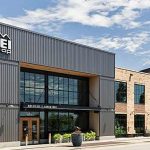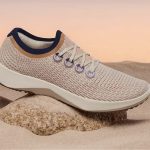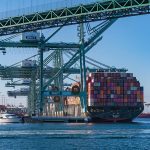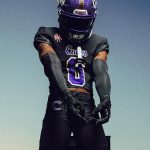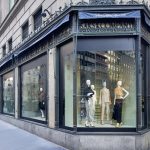Nike, Inc. just missed the $15 billion mark in its most recent quarter ended May 31, coming up just $45 million shy of another key milestone. The Nike brand did surpass $13 billion for the first time after hitting the $12 billion mark last year and a subsidiaries business that grew faster than the Nike brand on a percentage basis helped the company add more than $1.2 billion in total sales to its top line over the last year.
Nike brand growth in the U.S. region was said to be broad-based across most major wholesale accounts with Nike owned-retail stores delivering nearly $600 million in incremental revenues to the company for the year on continued strength in footwear and renewed growth in the apparel business. The company saw double-digit revenue growth for both the quarter and the year and pointed to a high-single-digit increase in backlog figures that was driven by an increase in both units and average price per pair.
The company said they increased Nike brand market share by two points over the last 12 months, growing nearly twice as fast as the overall market. They said they added more than five points of share in basketball year-over-year on the strength of both Nike and Jordan brand product and also saw gains in running and soccer. U.S. soccer revenues were up more than 27% for the year and global sales were up 19% to approximately $1.5 billion for the year. The company reportedly sold more than 2.4 million units of national team kits since March. Jordan brand product was also a key driver in both footwear and apparel, growing more than 40% for the year.
The increase in apparel sales was attributed to double-digit growth in branded apparel and Jordan brand apparel more than offset the decline in licensed apparel that has impacted sales for more than a year. The apparel increase for Q4 was said to be a result of increased replenishment and at-once orders. The decline in equipment sales for Q4 and the year was said to be due to the companys move to exit the commodity sock business.
Fourth quarter pre-tax profits in the U.S. were also up in double-digits for the quarter and the year, increasing 11.2% to $347.4 million in Q4 and more than 10% for the year to more than $1.24 billion.
The U.S. regions strong revenue growth and SG&A leverage was able to offset lower gross margins in the region as higher input costs for footwear cut into overall margins.
The EMEA region, which is comprised of Europe, the Middle East, and Africa, reversed the negative trend from Q4 last year as the region posted 10% growth in currency-neutral sales versus a 3% decline on the same basis last year. The World Cup was cited as a key reason for a 5% growth in footwear sales, a 16% increase in apparel, and a 21% jump in equipment revenues in the region when measured in currency-neutral terms. The brand also pointed to Nike PRO apparel as a contributor on the apparel side.
Total reported revenues for EMEA grew just 2.0% for the fourth quarter to $1.15 billion versus $1.13 billion in the year-ago period, while full-year revenues were up 1.1% to $4.33 billion. Management said that overall growth for the region was paced by the emerging markets including Russia, Turkey, and South Africa, but “nearly every country” posted higher revenues for the quarter and the year. Currency-neutral sales were up 3% for the year.
Gross margins “fell slightly” for the year in EMEA, a decline that was more than offset by SG&A leverage for the region. Margin erosion in footwear in Q4 was the main culprit for the GM decline for the year as a shift in product mix to a more value-oriented offering and higher input costs such as oil and labor that resulted in a “large gross margin decline” for the region in Q4.
Pre-tax income was down about 10.5% for the quarter to $227.6 million, a decline NKE said was due primarily to heavy demand creation spending, lower gross margins, and the stronger Dollar, but the region still delivered roughly $960.7 million in pre-tax income for the year, representing a 4.7% increase from the previous fiscal year.
China was again characterized as the “primary driver” behind growth in the Asia-Pacific region, posting a 50% increase in revenues for the quarter and the year to almost $600 million, or nearly 60% of overall A-P revenues. A China-only LeBron James shoe sold out in less than two hours. The company now has more than 2,300 Nike stores in China operated by their partners there. Still, “nearly every country” in the region posted higher revenues, but Japan saw currency-neutral sales decline about 2% for the year. Still, management feels good about the trajectory in Japan and sees the business accelerating during the back half of the year, pointing to a new management team, a 17% growth in running sales for the year, stronger sell-through numbers, and futures that are “starting to turn positive.”
Overall Asia-Pacific revenues increased 8.2% for the year to just over $2.0 billion, but A-P posted a 9% gain when excluding the effects of FX rate fluctuations. Fourth quarter revenues, which were up 4.4% to $558.6 million, improved 8% on a currency-neutral basis.
Footwear grew 6% in the Asia-Pacific region, while apparel increased 11% and equipment rose 9% in currency-neutral terms.
Asia-Pacific gross margins declined for Q4 and the year, thanks primarily to lower margins in Japan. Management pointed to higher discounts and investments in more value-oriented product for the decline. Pre-tax income fell more than 30% for the fourth quarter to $86.3 million from $124 million in the year-ago period, but still managed a 3.2% gain in profits for the year to $412.5 million. The Q4 decline was attributed to demand creation spend around the World Cup.
The Americas region saw revenues grow more than 30% for the year to $904.9 million, or about 19% growth on a currency-neutral basis. For the quarter, the Americas saw revenues increase 17.4% to $236.0 million, or about 9% when adjusting for currency fluctuations. Every country saw revenue growth for the year, with Mexico, Argentina, and Brazil making the largest contributions for the quarter and the year.
Pre-tax income was up 10.7% to $32.1 million in the quarter and full year pre-tax was up more than 48% to $172.6 million, driven by higher revenues, improved margins, SG&A leverage, and favorable FX rates. Increased spending around the World Cup was cited for the slower profit growth in the fourth quarter.
| Nike, Inc. Fiscal Full Year | ||||||
| Regional Operating Results | ||||||
| U.S. | EMEA | Asia/Pac | Americas | Other | Total | |
| Sales | $5,723 | $4,327 | $2,054 | $904.9 | $1,947 | $14,955 |
| Adj. Change* | n/c | +5.0% | +9.0% | +19.0% | n/a | +10.0% |
| Pre-Tax | $1,245 | $960.7 | $412.5 | $172.6 | $151.6 | $2,142 |
| Change | +10.0% | +5.0% | +3.0% | +48.0% | n/a | +15.2% |
| Backlog | +9.0% | +1.0% | +10.0% | -1.0% | n/a | +5.0% |
| Adj. Change* | n/c | +1.0% | +9.0% | +2.0% | n/a | +5.0% |
| * Adjusted for Currency Exchange Rates | ||||||
Total Nike and Jordan brand Footwear sales increased 4.9% for the fourth quarter to $2.10 billion, while Apparel sales grew 11.8% to $1.08 billion for the period. Equipment sales increased 2.3% to $230.6 million. For the year, total Nike brand Footwear sales increased 9.1% to $7.97 billion, Apparel grew 7.4% to $4.17 billion, and Equipment rose 5.9% to $873.9 million.
The Nike, Inc. subsidiary businesses, which includes Converse, Nike Golf, Cole Haan, Hurley, Nike Bauer Hockey, and Exeter Brands Group outpaced growth in the Nike brand business, with all brands except NBH posting double-digit growth for the year. The “Other Brands” business contributed two points of overall revenue growth for Nike, Inc. Fourth quarter revenues were up 12.5% to $595.5 million, but pre-tax profits took a hit from the Converse arbitration ruling that led to a one-third decline in profits to $45.0 million in the fourth quarter and a flat profit growth at $151.6 million. Excluding the $52 million charge, pre-tax would have been up more than 40% in Q4 and increasing roughly 34% to about $204 million for the year.
The Converse charge also had an impact on net income for the quarter and the year. excluding the charge, net income for Q4 would have been up 4.0% to $363.6 million and up 17.4% to $1.42 billion for the year.
A 140 basis point decline in gross margins for the quarter and a 50 basis point dip for the year also cut into profit growth, offsetting about 80 basis points in SG&A leverage for the year on tight expense management. Demand creation grew 9% for the year, thanks to the World Cup focus, the Winter Olympics, and the Air Max 360 launch, but still lower than the 16% growth in the previous year. The demand creation spend was up roughly 25% in the fourth quarter due to the World Cup.
The one area of concern that kept analysts asking questions was the 15% increase in inventories at the end of the period. Company CFO Don Blair said that about half the increase was due to in-transit inventories, but also indicated that a portion was related to the expansion of owned-retail stores.
The U.S was reportedly responsible for a large portion of the dollar growth in inventory, but that inventory was described as “very clean” and was driven more by the “timing of product receipts and growth in both futures and non-futures demand.” Outside the U.S., the in-transit issue was impacted by early delivery of Q1 product in Europe and Customs clearance delays in Argentina. Worldwide close-out inventories were apparently up about 5% from the last fiscal year-end, but were down about $50 million from the end of the companys third fiscal quarter.
The company expects to see EPS flat to down in the 2007 first fiscal quarter despite a forecast for high-single-digit revenue growth. Gross margins are expected to decline more than 100 basis points for the period as they go against the highest GM period last year and also expect to incur “relatively higher costs to meet capacity demands.” Demand creation will also be “significantly higher” in Q1 this year due to World Cup expenditures.
>>> NKE delivered $1.3 billion in free cash flow from operations for the year
>>> Just how much more can the U.S. business grow? Well, considering that the company added the equivalent of a New Balance to the top line without making an acquisition, while dealing with a soft Europe and issues in Japan, we suspect they will find a way to continue to grab share…
| Nike, Inc. | ||||
| Fiscal |


